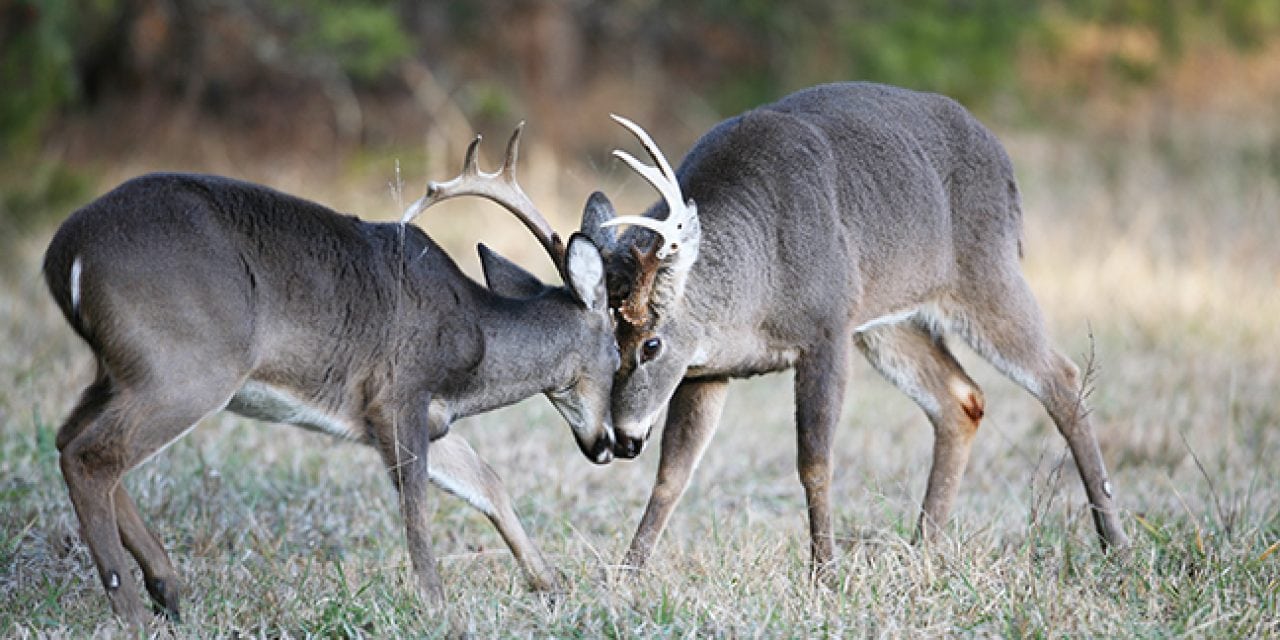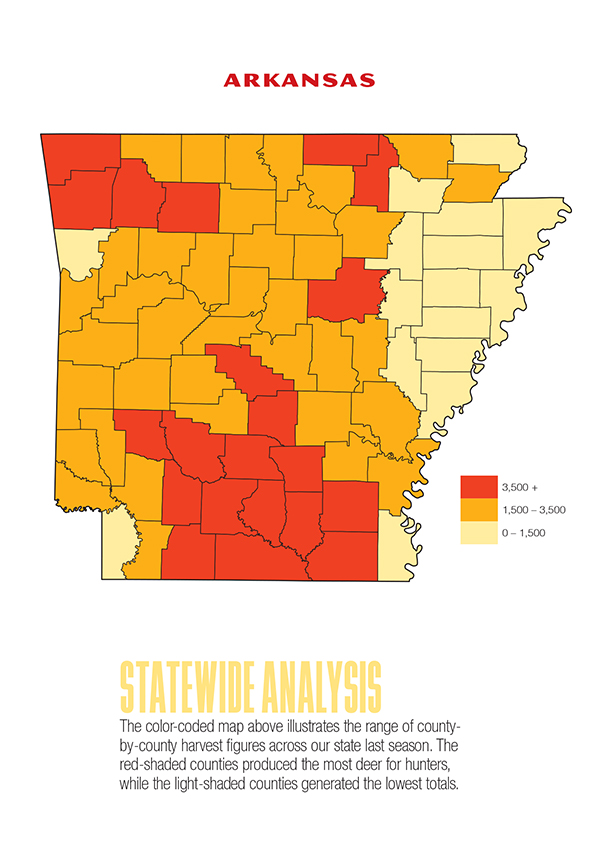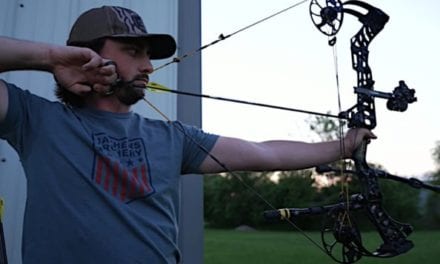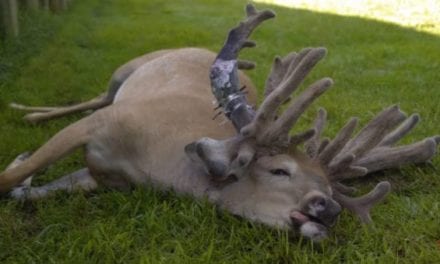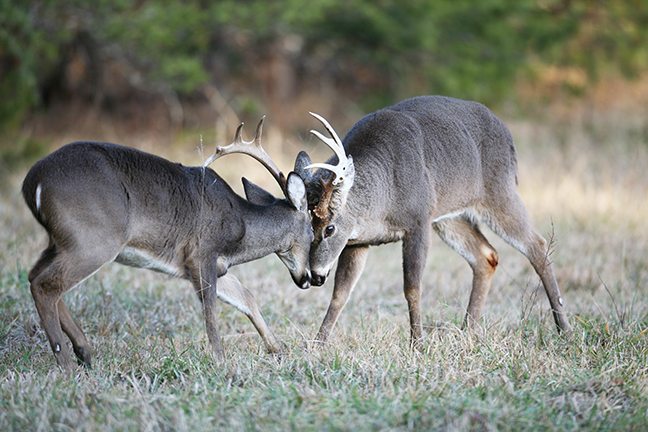
Photo By Ron Sinfelt
Despite fears of chronic wasting disease, Arkansas hunters are still taking peak numbers of deer, with no drop in participation.
If you want venison for the freezer, you can almost bet on killing at least one deer in The Natural State. Ralph Meeker, the deer program coordinator for the Arkansas Game and Fish Commission, said that nearly 70 percent of the state’s 313,000 licensed hunters killed a deer during the 2016-17 deer seasons, and that each hunter killed a statistical average of 1.2 deer.
We certainly don’t lack for opportunities. The Arkansas archery season runs from the last weekend in September to Feb. 28, the longest continuous deer season in the nation. We have two muzzleloader seasons that offer 12 days of exclusive opportunities for smokepole hunters in October and December. Our modern gun seasons are generous, but if you live in south Arkansas, it runs uninterrupted for nearly 40 days. And that doesn’t include a five-day private lands modern gun hunt that spans the end of October and the beginning of November, nor does it include a three-day Christmas holiday modern gun hunt.
On top of that, we also have two modern gun deer hunts for youngsters in November and January.
What do Arkansas hunters do with so much time? We kill a lot of deer, of course!
In 2016-17, Arkansas hunters killed 202,070 deer. That’s the fifth straight year that we killed more than 200,000 deer. That’s significantly less than 2012-13, when we killed a record 213,487. It hovered in that neighborhood until 2016-17, but 200,000 is still a big number in a state as small as Arkansas, and it demonstrates that we have a lot of deer to justify the Arkansas Game and Fish Commission offering so much opportunity.
Dr. James Kroll and Pat Hogan discuss the impact of wind on deer behavior.
(Via North American Whitetail)
Frankly, the AGFC was worried that the detection of chronic wasting disease in our state in early 2016 would scare a lot of hunters away from the sport. Arkansas sportsmen believe in eating what they kill, and many of us would quit hunting rather than shoot a deer we don’t intend to eat.
So far, that fear has been unjustified, Meeker said. Even in the chronic wasting disease “hot zone” of Newton County, deer hunters went about their business as usual. Most declined a free opportunity to have their deer sampled for CWD.
“That was kind of surprising to us,” Meeker said. “Last deer season we set up 25 check stations to take CWD samples in the CWD zone in the first weekend of modern gun season. We expected to get several thousand samples, but we only received 535 samples. We were surprised that not more people were willing get a free CWD sample on that weekend.”
The discovery of CWD opened a new chapter in Arkansas deer management. Deer restoration was our first era. It ended in the late 1980s when our deer herd was estimated at nearly 500,000, which seemed astronomically high at the time.
Now we’re estimated to have more than 1 million deer, and our management strategy until last year was for maximum sustained yield while maintaining a consistent population.
Now, at least in the CWD zone in the Ozarks, the strategy is radical herd reduction, with an emphasis on killing young bucks. The AGFC suspended the 3-point rule in Newton, Boone, Carroll, Madison, Marion, Pope and Searcy counties. The 3-point rule, adopted statewide in 1998, requires a legal buck to have at least 3 points on at least one antler. The AGFC also allowed hunters in the CWD zone to check button bucks as antlerless deer. Button bucks must be checked as bucks everywhere except in the CWD zone.
Curiously, hunters only took advantage of the more liberal regulations on public land, in the Ozark National Forest and Buffalo National River. They ignored them on private land, Meeker said.
We speculate here that landowners consider deer an asset in the Ozarks, and they were unwilling to undo what has taken generations to build.
“That was a real eye opener in that part of the world,” Meeker said.
The most significant harvest decreases, Meeker said, were in eastern, southeast and south Arkansas. South Arkansas is the Gulf Coastal Plain, which includes the vast area that comprises Deer Management Zone 12. This rural, heavily forested area of lowlands and river valleys harbors the largest number of deer in Arkansas, and it traditionally contributes the largest number of deer to our annual harvests.
Meeker said the buck harvest decreased slightly, but the doe harvest decreased significantly. That matters in terms of numbers, but it also reversed the recent trend of hunters killing more does than bucks.
Two things might have contributed to the lower harvests in those parts of the state, Meeker said. One was drought, and the other was a phenomenal mast crop.
Heavy rains in late fall often concentrate deer in higher elevations in low areas. We had an unusually dry fall last year, so deer remained dispersed.
“And, a lot of food plots failed because water wasn’t available,” Meeker said.
Lack of supplemental forage in food plots might not have mattered anyway because of all the acorns in the woods last year, Meeker added.
“We had a ton of acorns produced last year, and that reduced the amount of movement that deer had to make to find food,” Meeker said. “It also made attractants less effective. Corn wasn’t as effective as it normally is.”
Conversely, Arkansas is experiencing catastrophic, landscape-wide flooding as this article is being written. Meeker said he’s concerned that a significant number of fawns might be killed in the flooding. That will depress deer populations temporarily and reduce the number of deer that hunters might see this season.
In terms of overall counties, the same group of counties led the state’s deer harvest last year. Union County, as usual, was tops, followed by Clark, Washington, Bradley and Drew counties. Union, Clark and Bradley counties are in the Gulf Coastal Plain. Drew County spans the Gulf Coastal Plain and the Mississippi River Alluvial Plain (the Delta), and Washington County is in the Ozarks.
“We had a good mast crop in the Ozarks, but it seems like they run out sooner in the Ozarks than elsewhere in the state,” Meeker said. “Later in the season we did have lot of deer observation reports in fields.”
The urban deer hunts held in September continue to be popular and successful. Eight communities hold special archery-only hunts to reduce deer populations within city limits. About 750 to 850 hunters participate in the urban hunts, Meeker said, and they kill 800 to 1,000 deer annually.
Overall, Arkansas hunters seem to be very happy with the state of deer hunting in our state, Meeker said, even with CWD. As mentioned earlier, we have a lot of deer and a lot of opportunity to hunt them.
“Hunters are managers’ No.1 tool, and we don’t want to lose the ability to manage deer through hunting,” Meeker said. “The silver lining about the lack of CWD samples is that apparently people are not concerned. They’re going to keep hunting, and we want to make sure we keep recruiting and retaining hunters.”
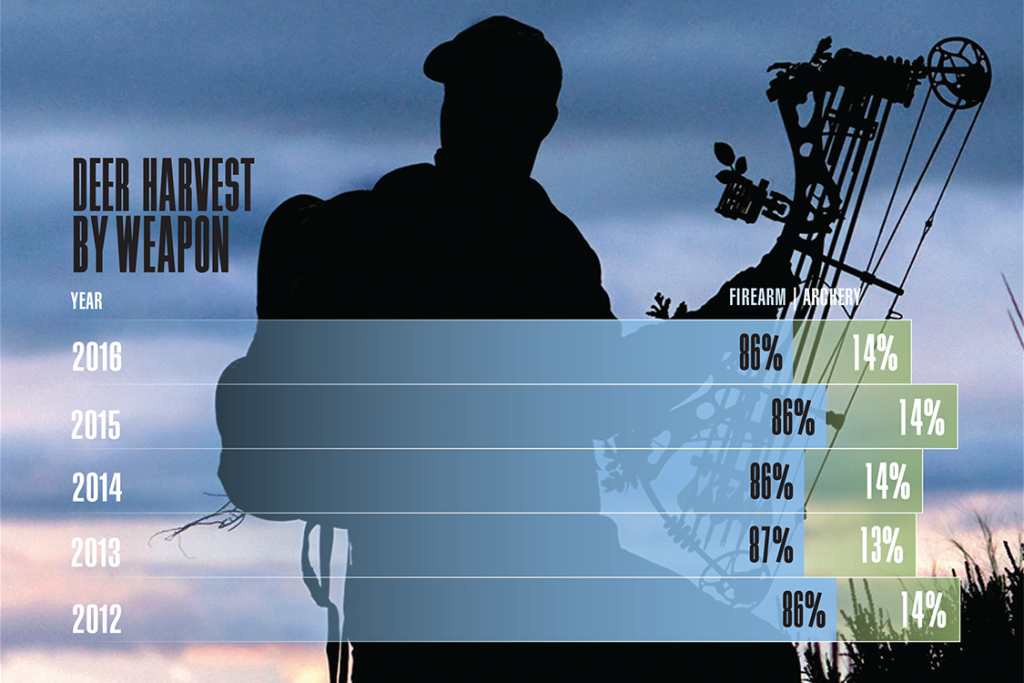
THE CITY SOLUTION
Arkansas has the longest continuous statewide archery season in the country, but archers can expand their time afield by a full month simply by participating in eight urban deer hunts.
The hunts are held in Bull Shoals, Lakeview, Fairfield Bay, Cherokee Village, Horseshoe Bend, Hot Springs Village, and in the cities of Russellville and Heber Springs. They open on Sept. 1 and run continuously through the last day of February.
The hunts are designed to reduce deer populations in residential areas where firearms discharge ordinances protect deer from the normal reductions that occur during the modern gun and muzzleloader seasons. Unmanaged deer herds outpace the natural food supply, and the animals cause a lot of damage to ornamental landscaping.
They also pose a significant hazard to motorists. According to State Farm Insurance, Arkansas ranked 14th nationally in deer/vehicle collisions in 2015-16. The insurance industry estimated 22,100 such claims in Arkansas, translating to a 1-out-of-96 likelihood of such an accident. That’s a 5.2 percent increase over 2014-15.
The aforementioned communities have embraced bowhunting as an enlightened solution that also provides unique, high-quality hunting opportunities. The bowhunts also are important for controlling the spread of disease among our whitetails, including chronic wasting disease.
The Arkansas Bowhunters Association manages all but the Bull Shoals and Lakeview hunts, which are managed by the Bull Shoals Urban Bowhunters Association.
For more information, visit arkansasbowhunters.org., or contact the Bull Shoals Urban Bow Hunters Association at bsurbanbowhunt@yahoo.com or 870-321-1447.
The post 2017 Arkansas Deer Forecast appeared first on Game & Fish.

